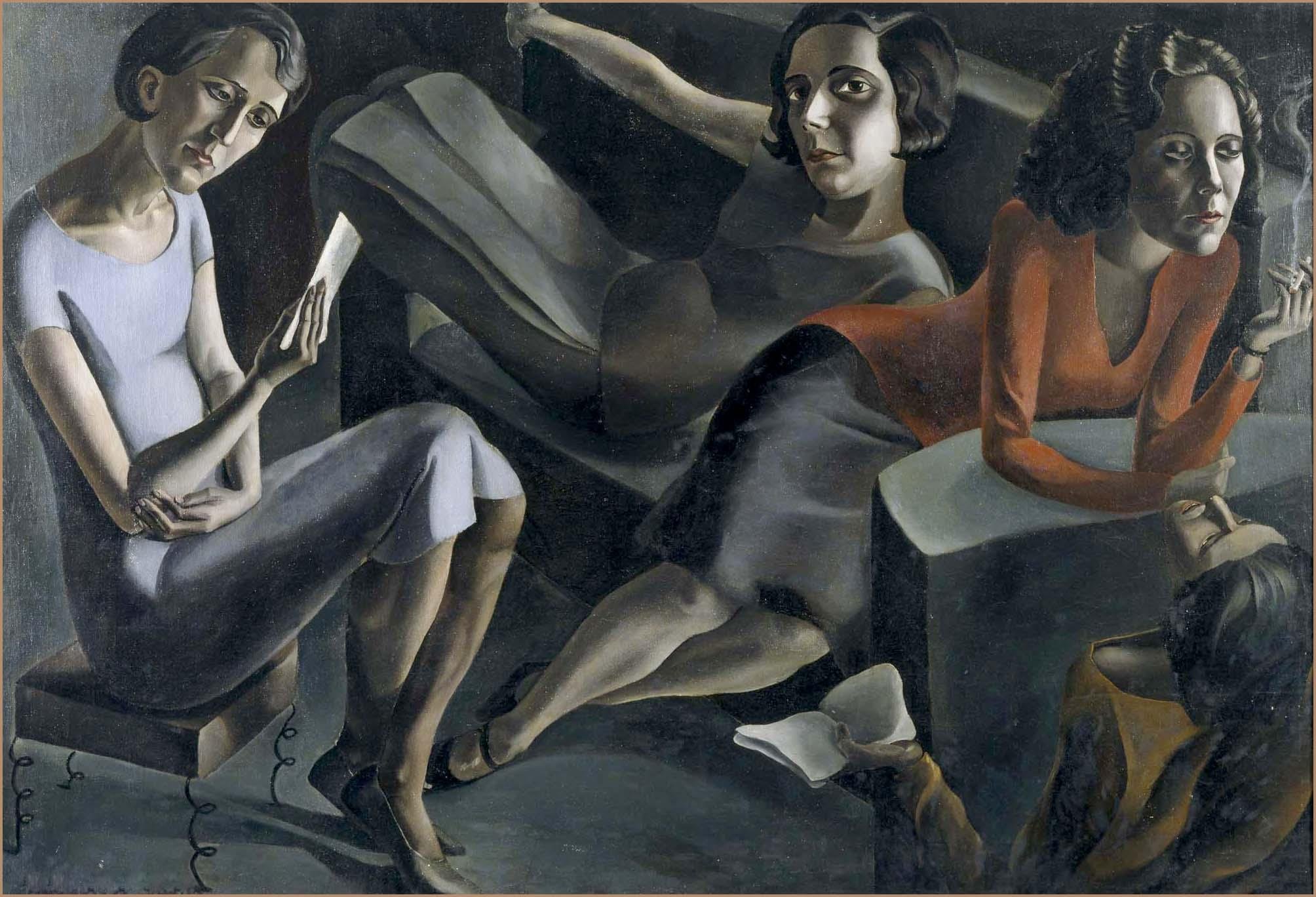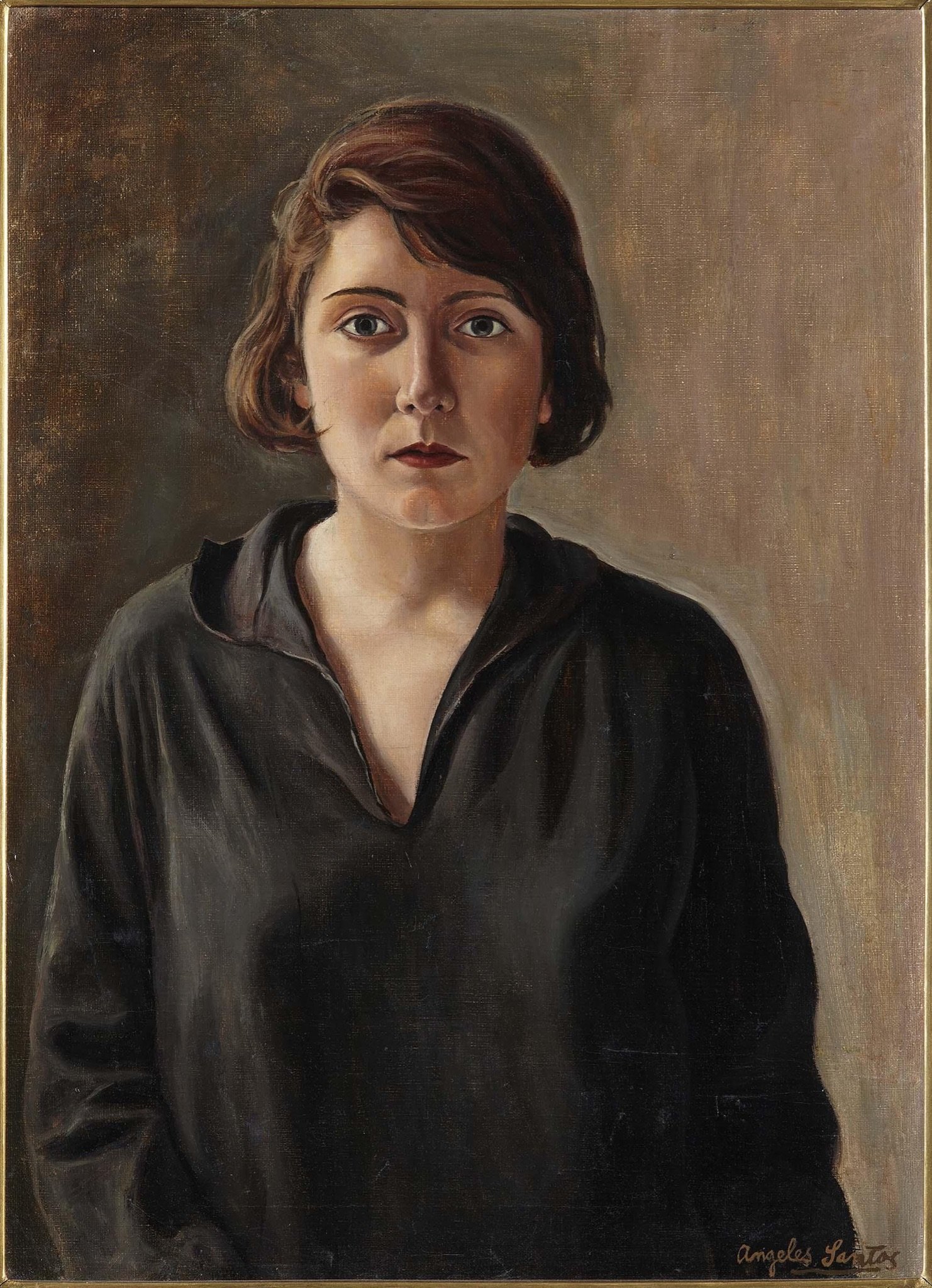Special features
Rebellion and Discretion: Ángeles Santos in the Reína Sofía
By Arcadia Molinas
I went on a guided tour of the Reina Sofía recently. I’d just been reading Olivia Laing’s ‘Funny Weather’ which for a moment imbued me with a sense of profound understanding towards art hitherto unexperienced. It was the perfect time to visit a museum. The tour was free and even though I had planned to go with a friend, who conveniently disappeared from the face of the Earth during the hours leading up to our encounter, which eventually led me to attend alone (and slightly fuming), I had a great time. The tour title was ‘A Feminist Look at the Vanguards’ and focused mainly on four female artists that painted during the first half of the 20th century in Spain – Ángeles Santos, Delhy Tejero, Maruja Mallo and María Blanchard. We were a small group of women in attendance, hailing from all sorts of backgrounds; in a short introduction round one woman revealed she was on her way back home to Argentina from the Vienna Biennale, two women, dressed head-to-toe in Desigual, were teachers in a high school in Valencia, in Madrid for the weekend. It was an eclectic group, and my friend was not missed.
Some of the paintings we saw I already knew of but had until then, never seen in the flesh. Standing in front of an artwork you have previously only seen on a screen is akin to going to a concert by a loved musician. A tenderness sweeps over you at witnessing first-hand the spoils of someone’s talent. Just as you feel the far-away musician’s small body encompass all those moments their music offered you, so too, do you stand in front of the art, regardless canvas’s size, rendered a miniscule body in the face of such enormity, the truth of the artistic feat standing tall before you.
This was what happened when I saw the paintings of Ángeles Santos. I had discussed one of her paintings on an Ecofeminist course earlier that year, where we had briefly looked at the ways women had represented themselves in art throughout history. That painting was ‘La Tertulia’, with its larger-than-life women, morosely sitting around a living room, smoking and reading. Standing in front of it, with its dulled but arresting colours and large female bodies that crowd and fill the painting, I was entranced by the sullen comradery of the figures. This private, domestic display of femininity was as unique as it was claustrophobic, their sprawling limbs bunched up to the very edges of the painting. These women, their hip haircuts, their cigarettes, their books, flashing us a glimpse of a shoulder, were quiet rebels. Despite this brazen freedom, their drawn expressions, the muted colours, indicate that a melancholia is present in that living room, entrenched and unshakeable. The furthermost figure on the right seems to be screaming up to an invisible figure above her. Could the conditions of their freedom be the source of their discontent?
Santos was only 18 years old when she painted La Tertulia. A silence falls over the group as the guide tells us this. She painted a self-portrait a year before, in 1928, which is starkly placed next to the grandiose Tertulia. The room is a small affair, an almost after-thought of a hall, and the only space in the entirety of the museum dedicated to the presence of women in the Vanguards. And, the guide is quick to point out, located next to the bathrooms. Thus, the empowering gesture of the museum to don an entire hall to an underrepresented component of a significant movement of the 20th century has been (one could only hope) subconsciously underplayed by unfortunate decisions regarding placing.
In any case, the magnificence of the paintings in the room, no matter how small, La Comulgante by María Blanchard, Delhy Tejero’s Self-Portrait, La Verbena by Maruja Mallo, shine on their own. Santos’ 1928 self-portrait is among them, and to me, the portrait displays a tender femininity, a woman’s face painted by a woman. In an interview she explained, “I painted myself as I looked every day, I used to dress very badly [...] I gave no importance to my clothes, or my hair, or to myself. Sometimes I smoked cigarettes. I barely even ate to go and paint as quickly as I could. I remember walking down the street with my dad and as I passed them, little kids would murmur ‘look at how strange she is.’”
Her eyes, as in those in her other paintings, capture a glow, an aliveness that is both feline and bold; they pin you in their intensity. Feminine and scruffy, soft yet unpolished.
Santos became famous nation-wide at eighteen years old, when her father, supportive of all things relating to her artwork, took her paintings to the Salon d'Automne, an annual art exhibition that has been taking place in Paris since 1903. There, her painting Un Mundo, caught the attention of Federico García Lorca and Ramón Gómez de la Serna, who upon setting their eyes on the enormous, 9 squared meter painting, wrote reverently about it in journals and newspapers, even going as far as visiting her personally in Valladolid, where she lived.
Mind you, she painted Un Mundo the same month she painted Tertulia. Santos was, as they say, on one. The story of Un Mundo has been heavily mythologised and rightly so. Standing in front of it was a bodily experience; my breath caught, and my stomach tightened. There’s a reason that it hangs in the contingent room to Guernica in the Reina Sofia.
Santos’ father worked as a customs officer for most of his life, which led him to travel often around the country, taking his family with him. They took an endless number of trains, clacketing up and down the breadth of wide Spain over and over again, and it was on these trips that Santos would find inspiration for Un Mundo. Our guide explained that Santos came home one day and told her father she wished to “paint the world” – just as she had seen it from the dusty carriage of a train. Obliging, her father got a hold of a massive canvas and in under a month, Santos had produced her masterpiece.
The painting depicts a cubic rather than spherical world, where people can be seen going to the cinema, to church, playing football, killing each other, and even getting together to smoke cigarettes and read books (she included a miniature representation of her future painting in one of the rooms of her wall-less buildings). Her world encompasses too that which lies above the sky, beyond human reach. Dotted around the painting are the intriguing bald, ear-less figures that float, sing and nurse bald, earless babies. Her inspiration for this was two-fold. First, it spawned from a conviction that there was life on mars, alien life. In an interview in 2003 she goes so far as to say, “I painted it so that they would take it to Mars and the Martians could see how life on Earth was.” The second, more forthcoming, comes from a poem of Juan Ramón Jiménez, which I’ll translate roughly:
Ángeles malvas
Apagaban las verdes estrellas
Una cinta tranquila
De suaves violetas
Abraza amorosa
A la pálida tierra
Mauve angels
turned off the green stars
a tranquil belt
of soft violets
amorously hugs
the pale earth
The influence of the verses is palpable. Her alien figures absorb the light from the sun and deliver it to the stars that shoot it down in turn towards the earth. The cyclical movement of these messengers bestows a movement to the painting that is reciprocated in some of its thematic presences - the sun on the top right corner, darkness on the top left, birth and pregnancy of the alien figure on the bottom right, angels raising to the heavens after death on the top left.
Following its exhibition, critics and artists alike all crowded to meet the teenage genius who had painted the world. Juan Ramón Jimenez, the poet inspiration of the painting, began a long correspondence with the young artist, and Gómez de la Serna described his encounters with Santos in articles and poems, talking about her quiet “violet” eyes and the long walks they would take around Valladolid, in the late 20s, a lively cultural hub. However, she would not paint again, halting her inspired production, for over 6 years.
As she herself confesses, painting obsessed her. She was peculiar and strange, she said of herself in 2003, all she thought about was painting. She developed neurasthenic symptoms, which she said came from not eating enough and one fateful night she left her home, direction the mountains, to “look for God”. A guard found her next to the river in a catatonic state and took her back to her parents. She was sent to a sanatorium where she remained 20 days before asking her dad to come get her. Our guide says that the treatment she received, electroshock perhaps, had a profound effect on her, for from that moment on, her painting, when she picked it up in 1935, changed radically. She preferred to paint still life, landscapes, and portraits over her visionary, sprawling creations. Her life took a turn to the conventional and discreet.
Below is a self-portrait she painted in 1943. In it, an elegant, well-dressed, not scruffy woman, poses besides two white doves and an angelic, cloudy sky. She wears a modest white skirt; her eyes are a baby blue colour as is her well-fitted jumper. She continued to paint until she died in 2013 but she disassociated with the frenzy of her youth. To me, witnessing her change begs the question: did her genius get mistaken for madness, as so often happened with talented women in the 20th century? Even more pressingly: did she confuse her genius for madness? Was she unwilling to see in herself the flame of unbridled talent? Did she prefer to shy away from the torment that that gift could bring rather than unleash it onto a canvas? Or could it be that the treatment she received at the sanatorium fundamentally altered her forever? Whatever the answer may be, her work, the visionary canvasses of her youth and her quieter creations of her adulthood, remains.




